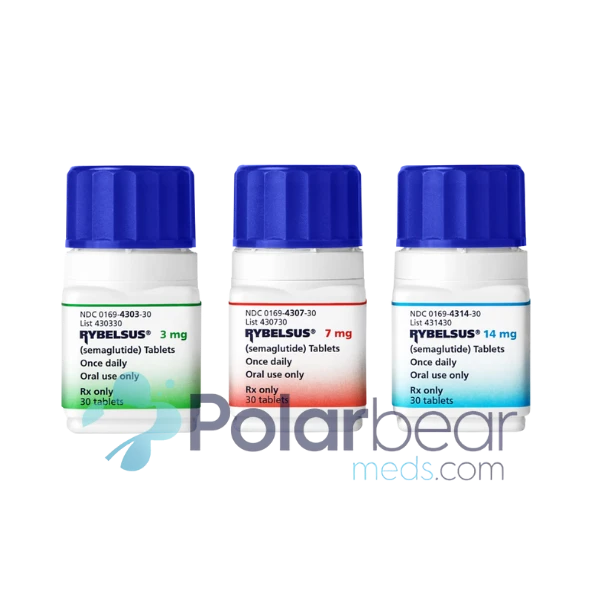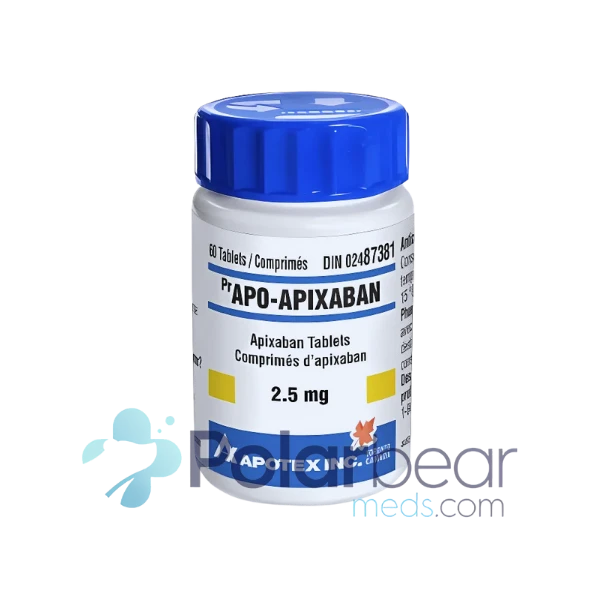
What Foods to Avoid While Taking Saxenda in 2024
Weight loss medications are becoming more popular, and more of them are now approved by the FDA. This is good news for the 41% of Americans who struggle with obesity. Finding the right medication can be a big help in reducing hunger and aiding weight loss. One such medication is Saxenda, also known as liraglutide. This is an injectable medicine used for weight loss. It’s suitable for adults and children over 12 who are overweight or obese.
However, just using Saxenda isn’t enough. For the best results, you should also eat healthily and exercise regularly. Eating the right foods and avoiding those that aren’t helpful can really boost your chances of success. This guide will show you what a healthy diet looks like when you’re taking Saxenda. You’ll learn about the best foods to eat, which ones to avoid, and other helpful tips you should keep in mind while taking Saxenda Injections for a healthy you.
How Does Saxenda Work?
Saxenda works by acting like a natural hormone in our body called GLP-1. This hormone helps you feel less hungry in two ways. First, it slows down digestion, so food stays in your stomach longer, making you feel fuller. Second, it tells your brain that you’re full. Feeling full more often means you’re likely to eat less, which can lead to more weight loss.
Foods to Avoid on Saxenda
When you’re using Saxenda for weight loss, it’s smart to pay attention to your diet. Not only should you focus on eating well, but there are also certain foods and drinks you might want to avoid. Here’s a simple guide:
- Cut Down on Sugary Stuff: This includes candies, cakes, sodas, and sugary juices. Saxenda helps lower your blood sugar, so eating a lot of sugar can counteract its benefits. Plus, too much sugar might upset your stomach, leading to diarrhea or other discomforts, which are also side effects of Saxenda.
- Be Cautious with Artificial Sweeteners: Ingredients like Sucralose, saccharin, aspartame, erythritol, and sorbitol can mess with the good bacteria in your gut. This can lead to digestion problems, making Saxenda’s side effects worse.
- Less Processed Foods, Please: Foods that come in packages often have extra salt and sugar, which aren’t great for digestion. They can cause bloating and don’t offer much in terms of nutrients. Plus, they’re often high in calories, which isn’t ideal when you’re trying to lose weight.
- Watch Out for Fatty Meats and Fried Foods: Foods like ribeye steaks, pork ribs, sausage, bacon, and fast food can slow down your digestion. This might increase gas, bloating, or constipation. These foods are also high in saturated fats, which aren’t good for your heart health.
- Limit High-Sodium Foods: Fast food, deli meats, canned soups, pickles, chips, and other salty snacks can raise your blood pressure and cause bloating. Since Saxenda slows down digestion, these issues could get worse.
- Go Easy on Alcohol: Alcohol can lower your blood sugar, and so does Saxenda. When combined, they can lead to dangerously low blood sugar levels. Also, alcohol ups the risk of pancreatitis, which is a potential side effect of Saxenda.
Saxenda Injections is there to help with weight loss, what you eat plays a huge role in your journey. Choosing the right foods can make your experience with Saxenda more effective and comfortable.
Best Foods to Eat on Saxenda
When you’re taking Saxenda, it’s super important to pick the right foods because while it helps you feel less hungry, your body still needs enough calories and protein to stay healthy and maintain muscle. Let’s break down what you should eat for both weight loss and overall health:
Vegetables: Go for leafy greens, broccoli, cauliflower, cucumbers, and carrots. They’re packed with vitamins, antioxidants, and fiber – all great for your health.
Whole Grains: Choose whole-grain bread, quinoa, oatmeal, brown rice, and whole-grain pasta. These are especially good if you’re feeling a bit queasy or struggling to eat enough. They add important B vitamins and fiber to your meals.
Fresh Fruits: Berries, apples, pears, grapes, and other fruits are fantastic. They give you fiber and natural fluids, which are great for digestion and keeping hydrated.
Legumes: Beans, soybeans, chickpeas, and lentils are top-notch for vegetarians. They’re full of protein and fiber, which are awesome for your gut’s good bacteria.
Lean Proteins: Skinless chicken, fish, eggs, and lean ground turkey or beef are your go-to for protein. They’re essential when your total food intake is lower.
Healthy Fats: Avocados, olive oil, nuts/seeds, and nut/seed butter are your friends. They provide healthy unsaturated fats that help your body absorb vitamins and keep your energy stable throughout the day.
Dairy: Milk, yogurt, and cheese are perfect for getting enough calcium for strong bones. If you’re into dairy alternatives, just make sure they have added calcium.
Fermented Foods: Don’t forget about yogurt, kefir, kimchi, sauerkraut, and other fermented veggies. They load your gut with good bacteria, essential for proper digestion and nutrient absorption.
Remember, while Saxenda is there to help with your hunger, these foods ensure that your body gets what it needs to stay strong and healthy.
Saxenda Diet Overview
You might be wondering, “What kind of diet is best when I’m using Saxenda?” If you search online, you’ll find tons of different answers and views. But the truth is, there’s no single diet that’s perfect for everyone. Instead, the key is to adopt healthy eating habits. This not only helps Saxenda work better but also supports lasting weight loss management.
Exploring healthy eating options can sometimes feel like a maze with so much information out there. But there’s a helpful guide I suggest you look into: MyPlate. It’s packed with easy-to-understand visuals and plenty of practical advice for adopting healthier eating habits. When you’re considering a diet plan, like with Saxenda, MyPlate offers a straightforward approach: it’s all about balancing what’s on your plate. Here’s how it works:
Half of your plate should be filled with fruits and vegetables. Think of options like strawberries and cucumber slices.
A quarter of your plate should be dedicated to proteins. This could be fish, chicken, or other protein-rich foods.
The remaining quarter should be whole grains, like quinoa or brown rice.
Eating right is key, especially when you’re taking Saxenda, which can make you feel full faster and reduce your appetite. Here’s a simple guide to help you eat better:
- Choose Fresh Over Packaged: Skip those processed foods that come in boxes, like Rice A Roni, which is high in salt. Go for healthier options like brown rice. Instead of pre-made chicken tenders, try cooking plain chicken breasts at home. This way, you know exactly what’s in your food.
- Adjust Your Meal Sizes and Schedule: Since Saxenda slows down your digestion, you might not feel hungry as often. It’s a good idea to eat smaller meals more frequently throughout the day. This ensures you get all the nutrients you need without feeling too full.
- Balance Your Meals: Try to eat a small meal every 2-3 hours. Make sure each meal has some protein (like chicken, fish, or beans) and a fruit or vegetable. This combo is great for getting your daily dose of protein, fiber, and other essential nutrients.
- Stay Hydrated: Drinking enough fluids is super important. Saxenda can sometimes cause constipation, so keeping hydrated helps prevent this. Water is your best choice. You can also have low-calorie drinks with electrolytes to stay hydrated.
How Do I Get the Best Results with Saxenda?
Saxenda is most effective when you make small, meaningful changes to your everyday life. This means changing what you eat, especially choosing slower-digesting foods over fast carbs. Opt for foods rich in protein, fiber, and healthy fats, which provide longer-lasting energy. At Calibrate, we offer a food program that encourages healthy eating habits for weight loss and long-term health. Our focus is on the quality of the food you eat, ensuring your body gets essential nutrients while helping you feel in control.
It’s important to note that the Calibrate food program isn’t a traditional diet. We don’t use meal replacements or fixed meal plans. We don’t ask you to count calories or limit your food intake. Instead, our goal is to help you find a balanced way of eating that fits your life. Calibrate food philosophy is all about making smart food choices for a healthier life. Here’s what it can do for you:
- Cut down on foods that aren’t good for your health: This means eating less sugar, avoiding fast-digesting carbs like white bread, and staying away from processed foods.
- Eat more of what’s good for you: Focus on high-quality foods and balance your meals right.
- Build a better relationship with food: Learn to see food as a friend, not an enemy.
- You don’t have to change everything overnight. Start small. Swap out fruit juice for fizzy water, choose whole-grain bread over white, or make a tasty homemade frittata instead of sugary cereal.
Also, think about reducing your alcohol intake. This can really help your body work at its best. You’ll probably sleep better and feel less tired during the day.
Tips for Having a Healthy Lifestyle & Diet on Saxenda in 2024
Saxenda is designed to enhance the health and well-being of individuals dealing with overweight or obesity issues. Being overweight often leads to a higher chance of various health problems. A good approach to weight loss and reducing Saxenda’s digestive side effects is to focus on your diet. This involves eating certain foods more and cutting down on others. This strategy not only helps in shedding pounds but also supports your overall health.To make the most of your diet and lose weight effectively, here are some easy yet professional tips to follow:
- Eat Slowly and With Awareness: Chew your food well and take a break between bites. Pay attention to your hunger and eat before you’re starving. Also, stop eating when you feel just full – it’s okay to leave a little food on your plate.
- Stay Hydrated: Drink about 64 ounces of water daily. This helps prevent constipation and keeps your kidneys in good shape.
- Focus on Protein: Make sure to have protein with every meal and most snacks. This keeps your blood sugar levels stable all day.
- Understand Food Labels: Knowing how to read food labels is crucial. This skill helps you compare products and choose the healthiest options.
- Avoid Very Strict Diets: They might help you lose weight initially, but they can slow down your metabolism and lead to quick weight gain when you stop. Plus, they might not provide all the nutrients your body needs.
- Don’t Skip Meals: Eating consistently, including three meals and one to three snacks daily, prevents extreme hunger and overeating later. Set a reminder to eat if it helps.
- Regular Exercise: Find a physical activity you enjoy. Aim for 150 minutes of moderate exercise and two days of strength training weekly.
- Get Enough Sleep: Aim for at least 7 hours of sleep. Not sleeping enough can make you hungrier and reduce hormones that help you feel full.
- Manage Stress: High stress can increase cortisol, leading to higher blood sugar and potential weight gain.
- Consider a Dietitian: If you’re trying to lose weight or improve your diet, working with a dietitian is a great idea.
What Happens If You Eat Sweets on Saxenda?
Eating sweets while on Saxenda could affect you differently. You see, sweets might increase some of the side effects of Saxenda. If you’re feeling nauseous or having stomach troubles after taking Saxenda, cutting back on sugary treats might help lessen these issues. It’s a good idea to pay attention to how your body reacts and adjust your diet accordingly.
Working with a Dietitian While Taking Saxenda
If you’re thinking about changing your diet or are on a weight loss journey, talk to your dietitian. This is especially true if you’re taking weight loss medication like Saxenda. Dietitians are experts in food and nutrition. They love to share their knowledge and give practical advice to help you improve your health.
While Saxenda can help with weight loss on its own, teaming up with a dietitian can boost your results. Plus, they’ll make sure you’re losing weight in a healthy and lasting way. Saxenda can sometimes make you feel nauseous or less hungry, which might lead to eating very little. It’s important to work with a dietitian to make sure your diet still gives you enough energy and the right balance of nutrients. This way, you can stay healthy while on your weight loss journey. Eating too few calories for a long time can actually slow down your metabolism. This makes it harder to keep losing weight and to maintain your weight loss. It can also cause you to miss out on important nutrients.
[Note: Buy Saxenda from Canada at substantial prices. Polar Bear Meds provides medications from the best Canadian online pharmacy at very low prices. So, why wait? Grab your offer Now!]
People often don’t eat enough protein when they’re cutting calories. It’s a good idea to have a dietitian check your meals to ensure you’re getting enough protein every day. They can also suggest simple changes to help you reach your protein goals. Not getting enough protein can lead to muscle loss. Muscles are important not just for strength, but also for keeping your metabolism active. The more muscle you have, the more calories you burn even when you’re not active, which helps with weight loss. A dietitian is key in helping you choose the right foods for ongoing weight loss and to keep the weight off, while also considering any side effects from medications you might be taking.






















